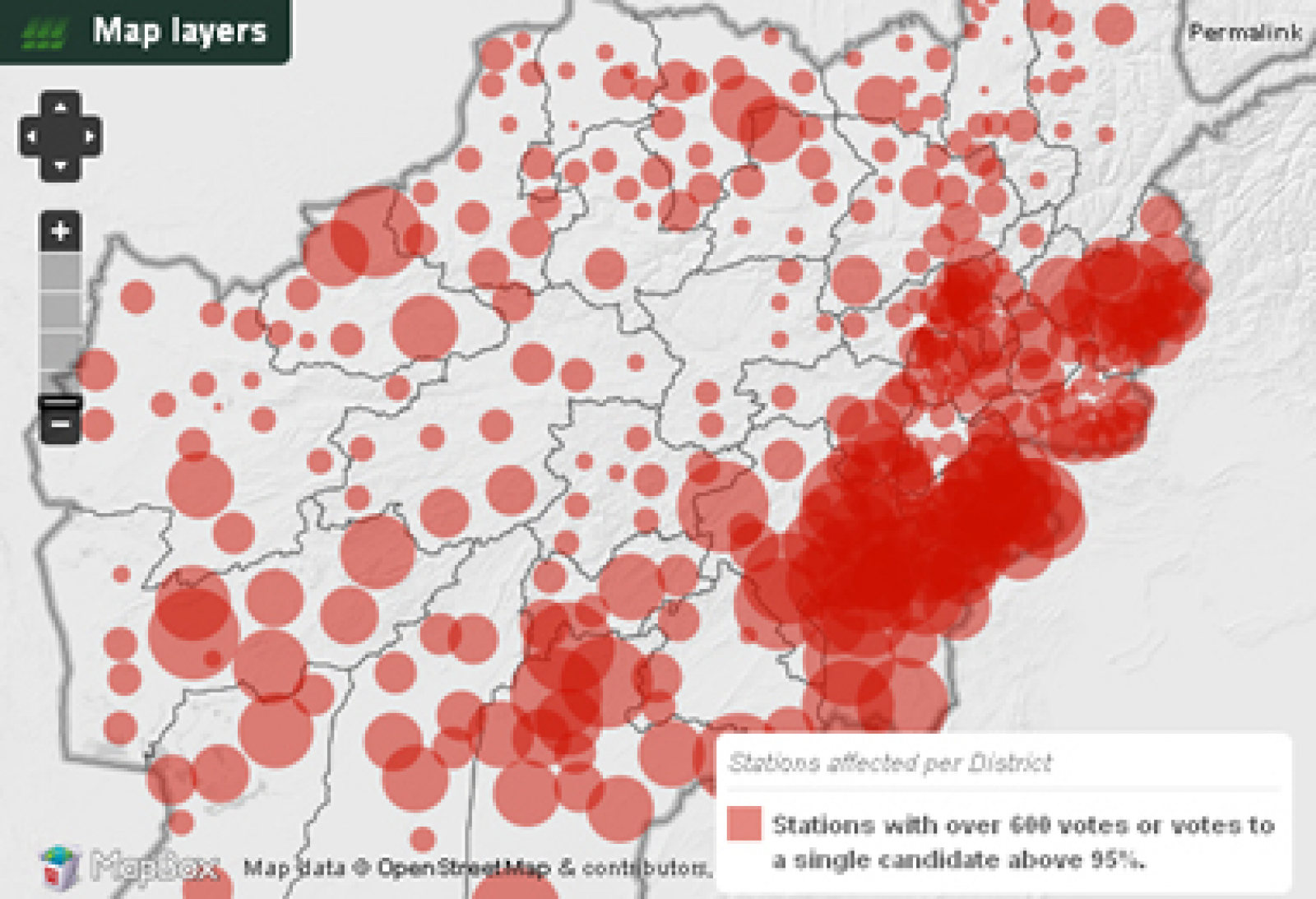
SHARE
An innovative online mapping tool for analyzing election results data from Afghanistan's Aug. 20 presidential election using demographic, ethnographic, topographic and security information was launched last month by NDI. The tool also identifies areas that had significant electoral irregularities.
NDI said the aim of the site is to make the election data more accessible and transparent so that those involved in the Afghan political process, including government officials, political parties and domestic monitoring groups, as well as those in the international community can use the information to improve future elections.
The information can be found at www.afghanistanelectiondata.org.
Using a data browser that provides tools to manage a series of maps, filters and overlays, the site provides numerous ways to segment and visualize raw vote count data from a countrywide, provincial, district, polling center and polling station level. Visitors can run customized queries with the results displayed as lists, charts and maps that might show, for example, how a specific candidate fared in mountainous areas that were the most secure or which candidates had more votes in areas where fraud was identified through the parameters of the audit and recount ordered by the Electoral Complaints Commission.
Making the raw polling data public and usable for varied analysis allows Afghan and international actors to consider scenarios that could help deter fraud in the future. In addition, given the availability of topographical data, the tool is able to show how voter accessibility around the country would be affected by weather and the timing of an election in the Afghan winter.
The raw polling station data was taken from the information made public by Afghanistan's Independent Election Commission. Complaints data was obtained through the public releases of the Electoral Complaints Commission. Other data sources were the Afghan National Security Forces Threat Assessment, Shuttle Radar Topography Mission, Afghanistan Central Statistics Office, Afghanistan Human Development Report 2007, Afghanistan Information Management Service and the Geo-Referencing of Ethnic Groups project.
The website uses all open source software and makes the data easily available for download in CSV (comma-separated value) format from any filtered data set or map the visitor creates. This open data approach allows site visitors to use their own analysis tools, which provides additional levels of openness and transparency and seeks to become an example that may foster similar "open government" type initiatives around the world.
Tim Berners-Lee, the British engineer, computer scientist and MIT professor who is credited with inventing the World Wide Web, singled out for praise the Afghanistan Elections Data site in a talk at the Technology Education Design (TED) conference in Long Beach, Calif. Read more»
This project was conducted in partnership with Development Seed, an online communications firm that specializes in data collection and visualization.
The Institute has been working in Afghanistan since 2002 and fielded an international election observer mission for the Aug. 20 elections. NDI's election observation program in Afghanistan is funded through a grant from the United States Agency for International Development.
Read more about NDI's election work in Afghanistan»
Pictured above: A map from www.afghanistanelectiondata.org showing the percentage of stations that met the IEC's basic parameters for audit and recount
Published on December 17, 2009; Updated March 11, 2010


